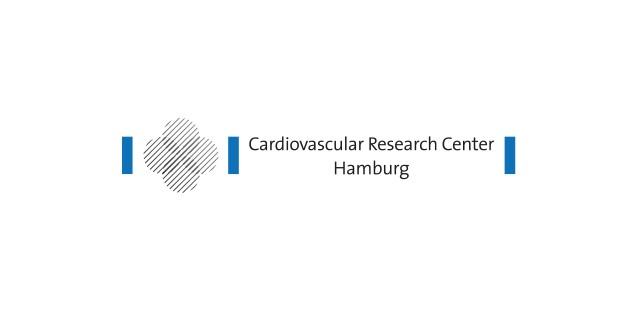The main focus of the research group "Molecular Cardiology - Genomics and Systems Biology" is the pathophysiology and the molecular mechanisms of cardiovascular disease using genetics, molecular biology, cell biology, bioinformatics and statistical methods and their combination in systems biological approaches. The identification and characterization of candidate genes and gene regulatory play an important role here.
We carry out so-called OMICS analyses to investigate the association of genetic variants, transcripts, proteins and metabolites with cardiovascular phenotypes. In molecular and cell biological experiments, the function and role of genetic variants and the corresponding candidate genes for the cardiovascular system are then examined.
For this purpose, large amounts of data from population-based studies, such as the Gutenberg Health Study (GHS) and the BiomarCaRE consortium are available. For example, our group was thus able to identify genetic variants that show a link to coronary heart disease and myocardial infarction. Since data regarding genome-wide gene expression as well as genetic variants for a large number of people are available to us, we were also able to show how the identified SNPs affect the expression of disease-related genes. The molecular function of these genes is studied using molecular, cell biological and systems biology.
In multiple projects of the research group we cooperate with national and international partners. For example, we are integrated in the Cardiovascular Research Center (CVRC) at the UKE,
the German Centre for Cardiovascular Research (DZHK)
, DZHK OMICS project group and the international BiomarCaRE consortium.
G-protein coupled receptors
G protein-coupled receptors (GPCRs), important cell-surface receptors facilitating communication between cells and environments by stimulating downstream signaling cascades, are of prime importance for cardiovascular homeostasis and play a pivotal role by regulating essential cardiovascular functions such as modulation of hypertension control (e.g. adrenergic receptors, angiotensin II receptor) and stimulation of inotropy. Furthermore, GPCRs are ideal drug targets and bear a considerable potential as targets for new therapeutics.
In a large-scale transcriptomics analysis of patients with a history of myocardial infarction (MI) at young age, we identify differentially expressed genes in early age MI. One of the significantly differentially expressed gene was a gene encoding a GPCR. As only limited information is available on its function and role in disease, we are interested in establishing the role of this novel GPCR in cardiovascular disease.
We use molecular and cellular approaches to move beyond the current knowledge towards an understanding of the molecular and functional mechanisms of this receptor protein. Specifically, we investigate the molecular regulation of its gene expression, the molecular and functional role of the protein and the underlying G protein signaling.
Contact
MetaXpress
Hypertension project
To analyze/detect new genes involved in hypertension, we performed population-based transcriptome analyses in the MetaXpress consortium. From the hypertension-associated genes a subset of candidate genes are selected on the basis of significance and literature searches to be analyzed/characterized further/in detail using molecular biological, cell biological methods as well as animal models.
Detected associations between gene expression of selected candidate genes and hypertension are validated in several smaller patient studies.
Additionally, we analyze the consequences of overexpression or silencing of single candidate genes on the monocyte transcriptome. Also the relevance of the candidate genes on proliferation, migration, gene/protein expression in other cardiovascular-/hypertension-related cells like endothelial cells and smooth muscle cells will be examined in detail. On protein level, we want to detect potential new and hypertension-relevant interaction partners of our selected candidate genes by HIS-tagging with subsequent purification and identification of possible co-purified proteins. To prove direct interactions between selected candidate genes on protein level, we perform co-immunoprecipitation followed by identification of precipitated proteins by western blot analyses.
Any potential aptitude of any selected candidate gene as prospective biomarker will be evaluated by testing for the presence of the candidate gene mRNA and/or protein directly in plasma and/or indirectly in exosomes shed by cells into the blood. Furthermore, we analyze the candidate genes on protein level for possible oxidative modifications, which might occur during hypertension development.
The findings we gain on the cellular in vitro level is further examined in vivo in animal models using murine hypertension models like the angiotensin-II-induced hypertension mouse mode in combination with knock-out of the corresponding candidate genes.
symAtrial
symAtrial - Systems Medicine of Atrial Fibrillation
A multidisciplinary, integrative, systems-based approach to investigate the development and progression of atrial fibrillation SymAtrial, a Junior systems medicine research alliances project, funded within the framework of e:Med is coordinated by our group and comprises the following four partners:
- Dr. Matthias Heinig (HMGU München)
- Dr. Arne Schillert (IMBS Lübeck)
- Prof. Dr. Renate Schnabel (UKE Hamburg)
- Prof. Dr. Tanja Zeller (UKE Hamburg, Koordination)
Aim of the symAtrial consortiumAtrial fibrillation (AF) is the most common arrhythmia with high comorbidity, mortality and significant public health impact. Little is known about risk indicators beyond a handful of established classical risk factors recently incorporated in a risk algorithm. Therefore, i) innovative approaches to enhance AF risk assessment are urgently needed and ii) a molecular understanding of the disease biology promises novel ways for risk assessment.
Within our symAtrial consortium, we will take an interdisciplinary systems medicine approach integrating knowledge from AF epidemiology, bioinformatics, statistics and molecular biology:
- Use of interdisclipinary systems medicine approach to explore the molecular pathophysiology of Atrial Fibrillation.
- Identify new, molecular risk factors of atrial fibrillation.
- Development and validation of risk ( forecasts ) algorithms , which integrate epidemiological and molecular information in bioinformatic approaches.
- Use of risk algorithms at the population level and in high-risk patients to identify individuals at increased risk of atrial fibrillation.
- Creation of methods and central units of data integration and system medical platforms within the consortium
These aims are processed together in 5 subprojects by the partners:
- Infrastructure of data management and data exchange (Schillert, Lübeck)
- omics analyses and longitudinal gene expression analysis (Schillert, Lübeck)
- Regulatory networks and computational systems biology (Heinig, München)
- Molecular characterization of AF candidate genes and pathways and translation into animal models (Zeller, Hamburg)
- Genomic Epidemiology of AF (Schnabel, Hamburg)
Contact
BiomarCaRE
BiomarCaRE (Biomarker for Cardiovascular Risk Assessment in Europe) is an EU FP7-funded collaborative research project that integrates clinical, epidemiological and biomarker research, as well as commercial enterprises throughout Europe, North America and Australia. The BiomarCaRE project aims to determine the additional value of multiple (new) biomarkers to improve risk estimation of cardio vascular diseases (CVD) related events in Europe. Ultimately, our BiomarCaRE consortium will develop a “European biomarker panel” for CVD prediction including the classical risk factors and established and novel biomarkers.
Our group is coordinating the collaborative BiomarCaRE consortium which integrates the efforts of 25 academic institutions and five small/medium-sized, research intensive enterprises (SMEs) with a focus on cardiovascular biomarker research across Europe. BiomarCaRE comprises 21 well-established prospective European population-based cohort studies, four cohorts of diseased subjects (disease cohorts, secondary prevention) and five clinical trials, totalling over 300,000 participants with follow-up (Figure 1). The central BiomarCaRE laboratory is directly located at the University Heart Center Hamburg where sample logistics and biomarker measurements but also data analyses has been performed.
Novel, -omics based biomarkers (origination from proteomics, transcriptomics, metabolomics and miRNomics) are disclosed by the academic and SME partners and compared to key established biomarkers such as high-sensitivity assayed troponin I, natriuretic peptides, high-sensitivity C-reactive protein, lipids, and further markers of cardiomyocyte micronecrosis, inflammation, und renal function. The SMEs introduce the technology and guide the development of the innovative assays needed for the measurement of these novel biomarkers.
The BiomarCaRE Project is designed as a multi-modular study including: 1) biomarker selection based on omics discovery studies as well as literature, and 2) assay development (Module 1), 3) data harmonization of large-scale studies and 4) biomarker determination, analyses and validation (Module 2), and 5) biomarker assessment in clinical trials and 6) economic evaluation (Module 3) (Figure 2).
The BiomarCaRE project is unique in terms of its dimension, targeting of novel biomarkers based on -omics technology, and the evaluation of the impact of a multiple biomarker score in large prospective population cohorts across different European regions. BiomarCaRE integrates modern, mainly SME driven molecular technologies with epidemiological approaches supplemented by economical assessment. This large individual-based database provides a unique opportunity to investigate the performance of established and novel biomarkers for cardiovascular risk assessment across Europe.
For more information, please visit our BiomarCaRE website at
www.biomarcare.eu/
Contact
non-coding RNAs
microRNAs (miRNAs) are regulatory, non-coding RNAs with a length of 19-25 nucleotides. By binding to the target messenger RNAs, miRNA can repress translation of mRNA into proteins thereby regulating gene expression at the post-translational stage (Figure 1). Via this mechanism, a wide variety of cellular processes are regulated by miRNAs. In cardiovascular disease, miRNAs are considered disease-specific biomarkers with defined groups of circulating miRNAs being quantitatively altered in certain disease entities such as myocardial infarction and coronary artery disease (Schulte/Zeller, Cardiovasc Diagn Ther, 2015) as well as heart failure (Schulte et al, World J Cardiol, 2015) among other cardiovascular diseases. miRNAs fulfill several criteria of an ideal biomarker such as stability in the circulation, tissue- and phathology-specific regulation as well as high sensitivity and specificity, which suggests their applicability as biomarkers for cardiovascular disease.
The biomarker-based diagnosis of unstable angina pectoris (UAP) remains a major unmet clinical challenge despite the improved utilization of high sensitive troponins. In our working group we have successfully identified miRNAs as promising biomarkers in the diagnosis of UAP (Zeller et al, Eur Heart J, 2014).
Apart from its diagnostic potential to detect cardiovascular disease the field of miRNA research has created potential new means of biomarker-based risk stratification for cardiovascular events. Stratification for coronary events among patients with coronary artery disease (CAD) is of considerable interest because of the potential to guide secondary preventive therapies. On the basis of our former results we evaluated the potential of the 8 miRNAs as prognostic biomarkers in CAD and were able to identify miR-132, miR-140-3p and miR-210 to predict cardiovascular mortality (Karakas and Schulte et al, Eur Heart J, 2016).
Additionally, we identified miR-197 and miR-223 as predictors for future cardiovascular death (Schulte and Molz et al, PloS One, 2015). Our results identified miRNAs as valuable biomarkers for risk estimation in CAD. From a clinical point of view circulating miRNAs might further enable physicians to predict the risk for future cardiovascular events, improve secondary prevention and lower cardiovascular mortality.
Contact
Telomeres
Telomeres are repetitive sequences at the end of chromosomes. They have important functions in ensuring chromosome stability and are linked to aging. It is known that chronically aging leads to telomere shortening. Also, shorter telomere length correlate with cardiovascular disease independent of conventional cardiovascular risk factors.
To better understand how these observations relate we are assessing relative leucocyte telomere length in individuals of population-based and disease-related cohorts and analyzing their on cardiovascular phenotypes. Our aim is to hereby broaden the perspectives on risk factors of cardiovascular disease.
/bilder/uhz_blau_70px_hoehe.png)
 Dr. rer. nat.Anna Lena Friederike Engels
Dr. rer. nat.Anna Lena Friederike Engels/koerner_sibylle_20171110_1_1_kontaktbild.jpg) Standort
Standort/bilder/personen/bhowmiksatya_20160428_9_kontaktbild.jpg) Dr.Satya Bhowmik
Dr.Satya Bhowmik/bilder/personen/jorge_enrique_duque_escobar_20131104_it_kontaktbild.jpg) Dr. rer. nat.Jorge Duque Escobar
Dr. rer. nat.Jorge Duque Escobar/bilder/personen/kontaktprofile/schulte_christian_20200929_02_2_kontaktbild.jpg) Dr. med.Christian SchultePhD
Dr. med.Christian SchultePhD Dr. rer. biol. hum.Apurva ShrivastavaStandort
Dr. rer. biol. hum.Apurva ShrivastavaStandort/bilder/personen/geppertkirstin_kontaktbild.jpg) Kirstin Geppert
Kirstin Geppert/bilder/personen/gerthsabine_kontaktbild.jpg) Standort
Standort/sch%C3%BCnemann_katharina_20171123_3_1_kontaktbild.jpg) Katharina SchünemannStandort
Katharina SchünemannStandort/winkelmann_claudia_20171113_6_1_kontaktbild.jpg) Standort
Standort








/bilder/personen/schnellasimone_kontaktbild.jpg)











/bilder/personen/haasetina_20160428_4_kontaktbild.jpg)
/bilder/personen/krausejulia_20160428_8_kontaktbild.jpg)